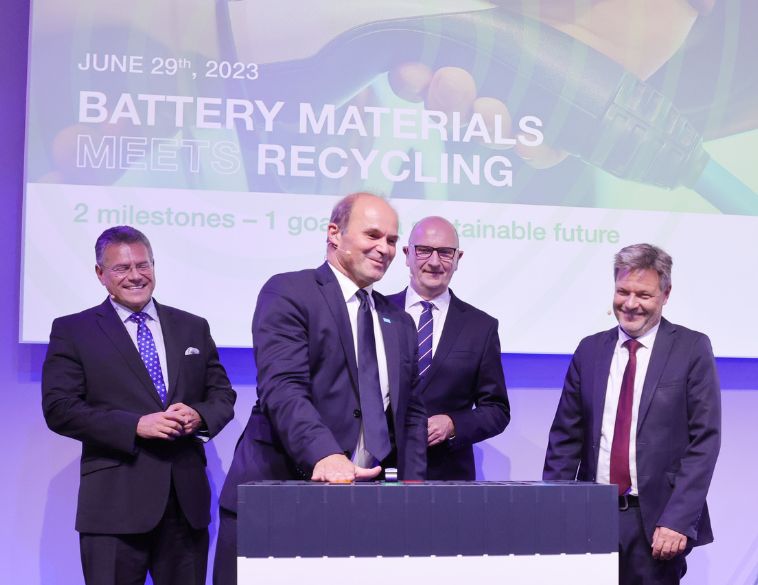Battery materials meet recycling: BASF establishes a co-located battery materials and recycling center and closes the loop in the European battery value chain.
Together with customers, politicians and partners, BASF celebrated the opening of Europe’s first co-located center of battery material production and battery recycling in Schwarzheide, Germany.
Major steps
The state-of-the-art production facility for high-performance cathode active materials and the battery recycling plant for the production of black mass represent major steps toward closing the loop for the European battery value chain – from the collection of used batteries and the recovery of mineral raw materials to their use in the production of new battery materials.
Battery materials are at the heart of lithium-ion batteries as they significantly determine their performance and therefore play a crucial role in the transformation of mobility.
European Commission Vice-President Maroš Šefčovič emphasized the importance of creating a competitive and sustainable battery cell manufacturing value chain in Europe. “The EU battery market is rapidly growing. Demand for batteries is expected to continue to increase drastically in the coming years for both mobility and storage, and our competitors are also pursuing this market. In this context, the European Commission is committed to keep building a solid battery ecosystem in Europe. This is why we have created the European Battery Alliance, which has helped to generate more than €180 billion in private investments so far. The BASF plant benefited from this work. With its focus on advanced cathode active material and on recycling, it demonstrates that we can boost the EU’s competitiveness and reduce its dependencies in a strategic sector, and accelerate the green transition.”
First production of cathode active materials in Germany
The new plant is the first production facility for high-performance cathode active materials in Germany and the first fully automated large-scale cathode active materials production facility in Europe.
The plant is fully sold out for the next years and will supply products tailored to the specific needs of cell manufacturers and automotive OEMs in Europe. The carbon footprint of BASF’s innovative cathode active materials is significantly lower than the industry benchmark thanks to BASF’s proprietary efficient production technologies, which include minimized energy consumption and a high proportion of renewable energy.
Dr. Robert Habeck, Federal Minister for Economic Affairs and Climate Action said: “BASF’s project increases our sovereignty along the value chain, promotes the circular economy and thus strengthens economic security. […] The project also highlights the ongoing transformation: Here, where coal was long liquefied into gasoline, the active material for EV batteries will be produced from now on. We are happy to support this transformation with IPCEI funding.”
Closing the loop for battery materials
BASF already offers cathode active materials based on recycled metals as a closed-loop solution in Asia and North America to conserve resources and further reduce their CO2 footprint. With the investments in Schwarzheide, BASF is now directly supporting the European market and at the same time enabling faster growth for its global business. End-of-life batteries and waste from battery production are mechanically processed in the new plant for black mass production. “Black mass” contains key metals used to make cathode active materials: lithium, nickel, cobalt and manganese. In the second step, these valuable metals can be chemically recovered most sustainably and used to produce new cathode active materials.
Construction of a black mass production facility has already begun, and production is expected to start in 2024.



